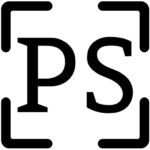Using a 4x5 has a totally different feel from anything smaller. For me, the slow, methodical process brings out a clarity of thought into the composition, selection of technical parameters like aperture, shutter, planes of focus, etc. that makes it very gratifying. It has little to do with resolution, or sharpness, or other parameters which are important only to the photographer, though these can also be made as good as anyone would like...its about the technique. The look and feel of a large format photograph is different, and to me it can convey more of the sense of being there, looking through the eyes of the photographer than with any other format. And feels vastly more satisfying (and slower) to work on my Sinar than with any other camera. Including the Alpa STC, or my day to day use GFX.

Working with an off camera flash is easy, even with a 30 year old 4x5. Just connect the wireless trigger to the X flash sync port of the lens, and off you go! You will need a digital camera to set flash power, or a flash meter.
Developing film is another story. While BW is easy, colour developing is not as straightforward. C41 and E6 chemistry can be bought and can be used to work from home. I use a Stearman Press ST-445 daylight tank, which only need to be loaded in the dark (I use a changing bag). BW chemistry works at 20C, but in Singapore weather, it means an ice bath is needed. For C41 and E6, temperature ranges needed are more narrow. But these days with inexpensive sous vide kits, 40C can be easily attained with excellent accuracy and stability. For me, the big problem is to ship the chemistry, which are considered dangerous goods, and most makers do not ship by air, and out of country. If you are in the US or EU, this problem may not apply to you. Luckily, I still have a local lab who will do 4x5 development, BW, C41, or E6. Expensive, but I don't really shoot much large format. The image above was shot on Sinar X with Nikkor W 180mm/f5.6 lens. Film stock is Shanghai GP3, exposed as ISO50, developed with Ilford ID-11 as ISO100.


